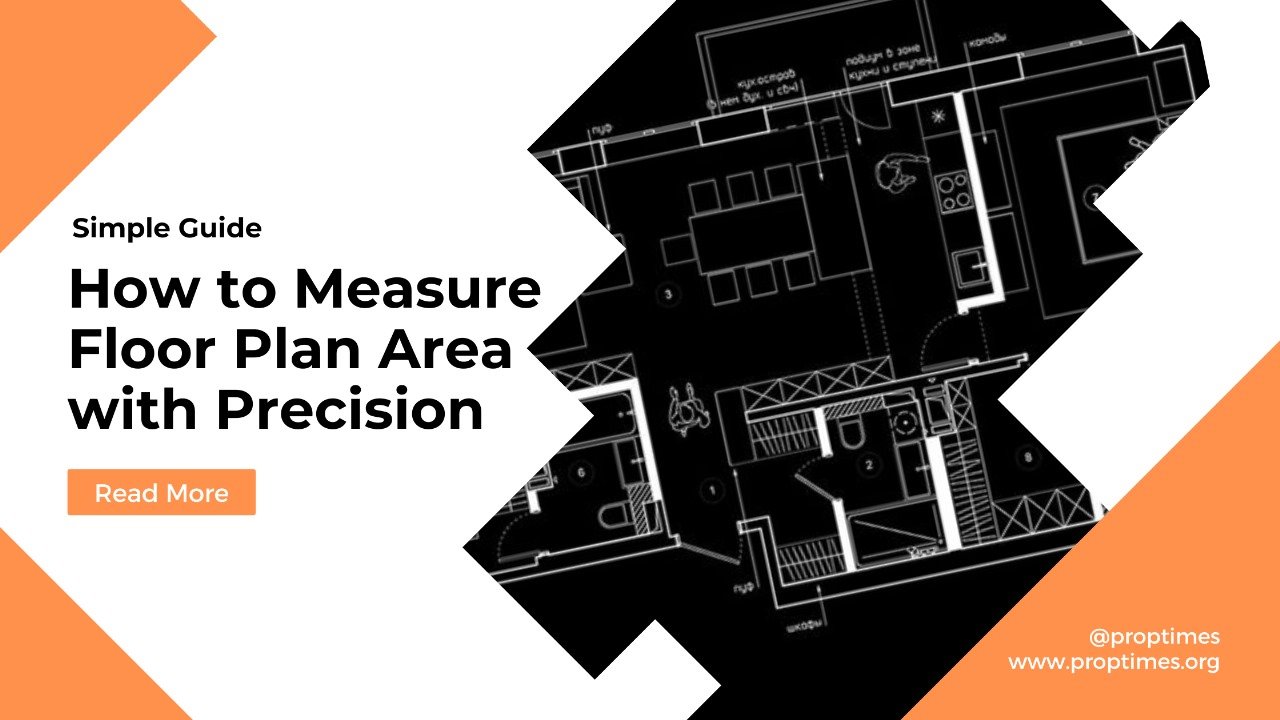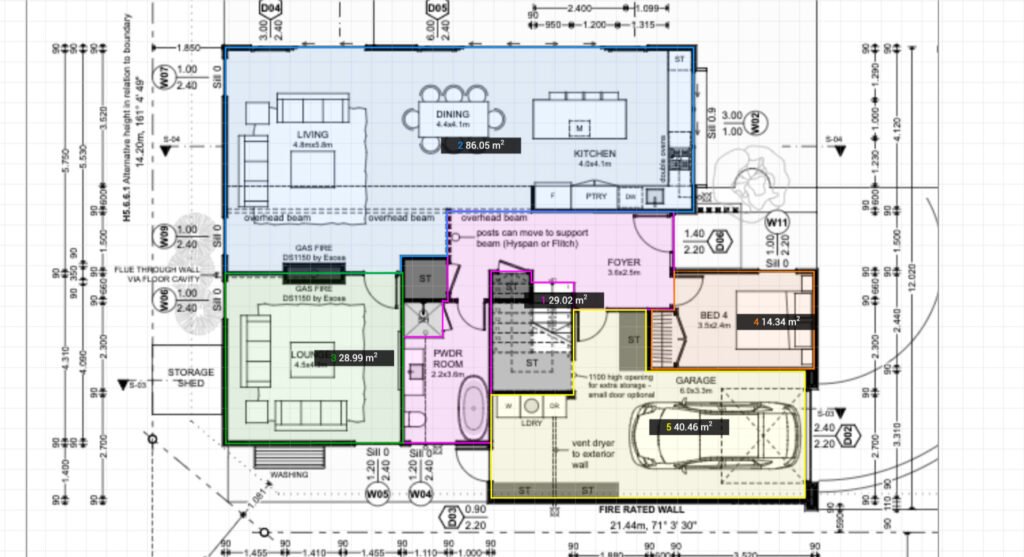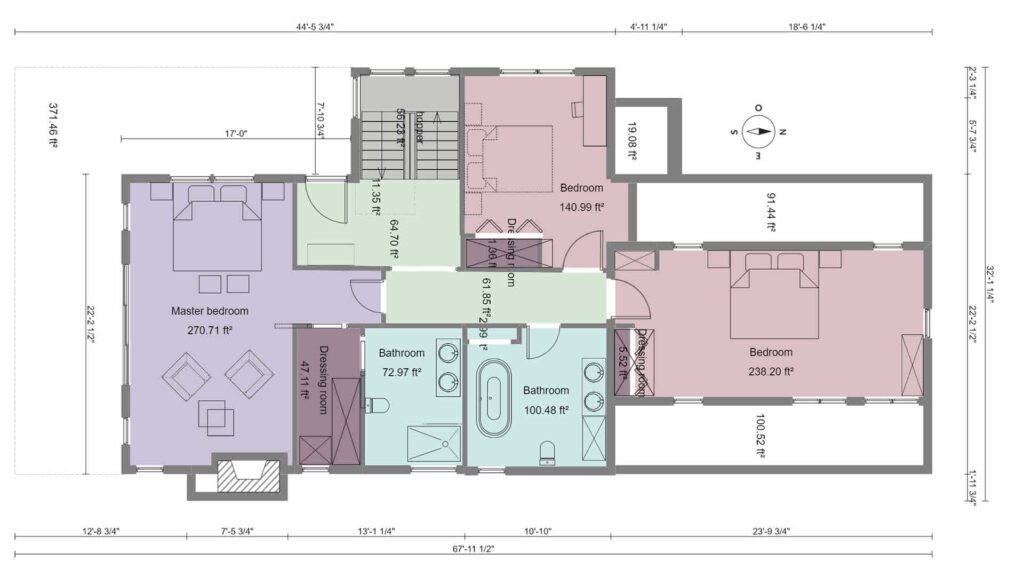
Simple Guide: How to Measure Floor Plan Area with Precision
When it comes to renovating or designing a space, one of the crucial steps is accurately measuring the floor plan area. Whether you’re a homeowner planning a renovation or a real estate professional assessing property value, knowing how to measure floor plan area is essential.
In this comprehensive guide, we’ll delve into the methods and techniques for accurately measuring floor plan area.
Why Accurate Floor Plan Measurements Matter
Before diving into the how-to aspect, it’s essential to understand why accurate floor plan measurements are crucial. Whether you’re buying, selling, or renovating a property, knowing the exact dimensions helps in making informed decisions.
Inaccurate measurements can lead to costly mistakes, delays, and even legal issues down the line
Key Terms and Concepts how to measure floor plan area
Before we proceed, let’s familiarize ourselves with some key terms and concepts related to floor plan area measurement:
1.Square Footage: The area of a space measured in square feet or square meters.
2.Floor Plan: A scaled diagram of a room or building viewed from above, illustrating the arrangement of rooms, walls, doors, and windows.
3.Scale: The ratio of a measurement on the floor plan to the actual measurement of the space.
4.Boundary: The perimeter or outline of the floor plan area.

How to find the area of a floor plan
The Simple Technique for Calculating Floor Areas of Unique Shapes
When confronted with unconventional floor shapes like circles, calculating square footage might seem daunting. However, fear not! With a basic understanding of geometry and a handy formula, you can easily determine the area of even the most irregular spaces.
Let’s tackle circular rooms. The formula for finding the square footage of a circular area involves πR², where π (pi) is approximately 3.14 and R represents the radius of the circle. Remember, the radius is half the diameter.
Here's a straightforward method:
1.Measure the diameter of the circle, which is the distance across the middle from one side to the other.
2.Halve the diameter to find the radius. For instance, if the diameter measures 7 feet, the radius would be 3.5 feet.
Now, let's plug the radius into our formula:
Radius (3.5 feet) × Radius (3.5 feet) × π (3.14) = 38.465 square feet.
Round up the result to the nearest decimal point for practicality. So, in this case, the area of the circular room would be approximately 38.5 square feet.
By following these simple steps, you can confidently calculate the square footage of circular areas, turning what may seem like an intimidating task into a manageable one. Whether you’re measuring for renovation purposes or simply satisfying your curiosity, understanding these techniques empowers you to handle odd-shaped spaces with ease.
Firstly, understanding how to measure floor plan area
requires familiarity with basic geometry. Start by breaking down the floor plan intheight. And for irregular shapes, consider dividing them into simpler forms and calculating each separately.
How to measure house plan
House plans typically consist of multiple rooms and areas. To measure the entire house plan, sum up the areas of all individual rooms and spaces. Remember to account for any openings such as doors, windows, and alcoves.
How is floor plan calculated
Modern technology offers convenient tools like floor plan software and apps that streamline the measurement process. These tools allow you to input dimensions digitally or recognizable shapes: rectangles, squares, triangles, and occasionally, circles.
For square or rectangular rooms, simply multiply the length by the width to find the area. For triangular areas, use the formula: 0.5 * base * and automatically calculate the area.

How to get the area of a floor plan
In conclusion, mastering how to find the area of a floor plan involves breaking it down into manageable shapes, applying basic geometric formulas, and utilizing technology when needed. With these skills, you’ll confidently navigate the world of floor plan measurement, whether you’re designing your dream home or analyzing architectural blueprints.
Effortlessly Measure Open Space Floor Plan Area and Determine Square Footage
1.Sketch the room’s outline.
2.Segment it into distinct shapes (like squares, rectangles, semicircles).
3.Calculate each shape’s square footage.
4.Sum up the areas for the total room square footage.
Steps for how to measure floor plan area
Now that we’ve covered the methods let’s dive into the step-by-step process of measuring floor plan area:
1.Gather Tools and Materials: Depending on the method chosen, gather the necessary tools such as measuring tape, laser measurement device, or smartphone with measurement app.
2.Prepare the Space: Ensure the space is clear of any obstructions or clutter that may interfere with measurements. Remove furniture or obstacles to access all areas of the room.
3.Start Measuring: Begin by measuring the length and width of each room, ensuring to measure from the inside edge of walls for accuracy. Record measurements in a notebook or digitally.
4.Calculate Area: Multiply the length by the width for each room to calculate its area. If the room is irregularly shaped, break it down into smaller, more manageable shapes (e.g., rectangles, triangles) and calculate their areas separately.
5.Sum Up Areas: Once you have measured and calculated the area of each room, sum up the total area to get the overall floor plan area.
6.Verify Accuracy: Double-check measurements and calculations to ensure accuracy. Use multiple methods or cross-reference with existing floor plans if available.
Tips for Accurate Measurement
To ensure accurate floor plan measurements, consider the following tips:
1.Use a Level Surface: Ensure the floor is level when measuring room dimensions to avoid skewed measurements.
2.Account for Nooks and Alcoves: Pay attention to alcoves, closets, and irregularities in room shapes when measuring, as they can impact the overall area.
3.Check for Obstructions: Be mindful of obstacles such as pillars, built-in furniture, or structural elements that may affect measurements.
4.Take Multiple Measurements: To minimize errors, take multiple measurements of each dimension and calculate the average.
Conclusion
Accurately measuring floor plan area is essential for various purposes, including construction, renovation, and real estate transactions. By following the methods and steps outlined in this guide, you can ensure precise measurements and avoid costly mistakes
Whether you opt for traditional measuring tape methods or embrace digital solutions, the key is attention to detail and thoroughness in the measurement process.
In conclusion, mastering the art of measuring floor plan area empowers homeowners, designers, and real estate professionals to make informed decisions and achieve their desired outcomes.
So, the next time you embark on a home improvement project or evaluate property dimensions, remember the importance of accurate floor plan measurements
Can't Find What you are looking for?
Tell us about your choice here!











